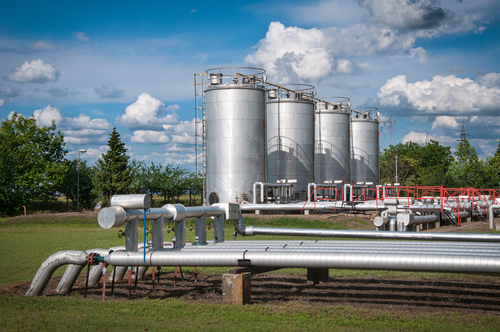
The construction and expanded manufacturing activity brought by a polypropylene manufacturing facility to the greater southeastern Pennsylvania region could have a total economic impact of $1 billion in less than a decade, a newly released study from the Pennsylvania Manufacturers’ Association (PMA) concludes.
However, the region’s lack of pipeline infrastructure renders the area unattractive to investors for such projects, study authors David Taylor, president and CEO at PMA, and Carl Marrara, vice president of government affairs at PMA, write in the Jan. 15 Economic Model Analysis: Polypropylene Manufacturing Plant Expansion in Delaware County, PA.
And that’s got to change, they say.
“This study is relevant because we constantly hear from both gas producers and end users that Pennsylvania lacks pipeline capacity and it’s a hindrance to business development,” Marrara told Pennsylvania Business Report yesterday.
Modern manufacturing relies heavily on natural gas both as a fuel, but also natural gas liquids (NGLs) as a feedstock for every plastic, foam, rubber, coating, solvent, glaze, and more, Marrara wrote in an email.
“By connecting end users with the glut of natural gas Pennsylvania producers have to offer, everyone wins,” he said. “But state government isn’t moving at the speed of business and we are losing out on business investment because of this.”
In 2016, for example, Philadelphia-headquartered Braskem, the largest petrochemical company in the Americas and the world’s leading biopolymer producer, announced the company would make a major facility investment in La Porte, Texas rather than in Marcus Hook, Pa., due to a lack of pipeline capacity in Delaware County for NGLs, according to PMA.
Braskem — which produces polyethylene, polypropylene and polyvinyl chloride resins, as well as basic petrochemicals such as ethylene, propylene, chlorine and benzene — also indicated at the time that any future investment in Marcus Hook was possible if the state developed its pipeline infrastructure.
“Without a business and regulatory climate that fosters this growth and accommodates the pipeline infrastructure development required to attract additional investment to Southeast Pennsylvania, the area may well remain unattractive to major investors for future projects such as this one,” the PMA executives write in the study.
And the region needs this economic boost.
Overall, Marrara said manufacturing remains strong in Pennsylvania, where manufacturers account for 11.7 percent of the total output in the state at $87.65 billion in 2017.
“In November of 2018, the latest data set available, there are more than 562,000 employed in the manufacturing sector, accounting for 9.7 percent of the total Pennsylvania workforce, but millions of jobs rely on this core manufacturing activity in supply chains, distribution services and vendors of industrial services,” he told PBR.
In Delaware County, however, Marrara said that “the overall percentage of manufacturing employment falls below the state average at 6.4 percent of the total workforce.”
Ramping up pipeline infrastructure development in the area could bring in more manufacturing investment dollars, PMA says.
“We often say that we can’t miss what we never had, but with economic modeling we can now quantify what an energy-enabled economy actually means,” Taylor said on Jan. 11, adding that it’s not just about the jobs needed to build such a site or the initial $675 million investment for the plant expansion.
It’s also about the indirect and induced jobs that would uphold, sustain and support the construction and the expanded manufacturing activity throughout the southeast Pennsylvania region, said Taylor.
For instance, an expanded polypropylene manufacturing facility in Marcus Hook would require 1,000 construction jobs over a two-year period, plus bring in an additional 50 full-time, permanent plastics and resins manufacturing jobs to the plant, according to PMA’s study, producing an economic impact totaling more than $1 billion in less than five years.
And this economic activity doesn’t account for the upstream jobs and materials needed to build pipeline infrastructure or for the downstream plastic products manufacturing and/or complimentary manufacturing activity that would occur with the availability of affordable and abundant polypropylene products, according to the study.
“The multiplier effect from a facility like this that is beyond measure,” Taylor said. “For example, this facility could manufacture yogurt containers and that activity could be transformative for Pennsylvania’s dairy industry and the overall agricultural sector. That’s just one example of a single product that could find its foundational footprint in Pennsylvania.”
From yogurt cups, to bottle caps, to prescription bottles, it’s this downstream activity that “presents the truly transformative economic opportunity for the entire region,” according to the PMA study, provided that the state improves development of its pipeline infrastructure.
Moving forward, Marrara said PMA plans to continue to advocate for energy infrastructure throughout the commonwealth.
“This isn’t an isolated issue,” he said on Monday. “There are entire regions of Pennsylvania that don’t have access to natural gas or natural gas liquids because of a lack of pipeline capacity, or pipelines at all.”
Pipelines are by far the safest and most efficient means of delivery, added Marrara.
“By reducing the cost of transmission of this commodity, more industrial end users will locate where energy and feedstock are accessible and affordable,” Marrara said. “As the adage goes, ‘if you build it, they will come.’”